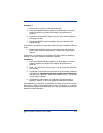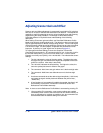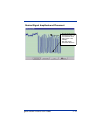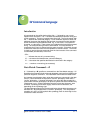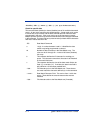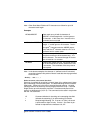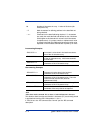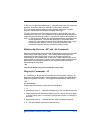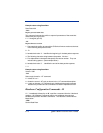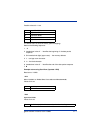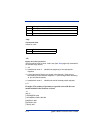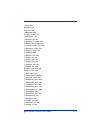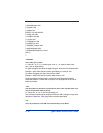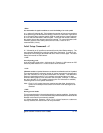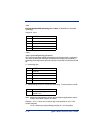
Quick Check® SV Series User’s Guide 6 - 5
If ~BU1 set, if a right bracket character ( ] ) character is set in the ~BC command
data field, that will be used as a match for a Code 128 F1 character.
The F1 character will be treated as a data character rather than a symbol
character and therefore be included in the data match logic.
This also means that even if the special character is not included in the ~BC
command, but ~BU1 is set, an F1 character in the symbol will still be checked as
a data character, therefore any extra F1 character will cause a data match error.
Note: If ~OS1 is set, and ~BU1 is set, right bracket characters are stripped from
the transmitted data. Therefore this application is not suitable when
mixing GS1-128 codes and normal Code 128 codes that contain a right
bracket character. Setting ~OS0 for all symbol characters in the
transmission operates normally with either setting of ~BU#.
Relationship Between ~BC and ~Br Commands
When programming both data match and increment/decrement arrays, the data
match array(s) have higher priority. This is useful when analyzing a label
containing more than one bar code, and one of the codes contains an
incrementing or decrementing field. In this case, a data match array(s) can be
used to match (or in this case – logically “mask”) the bar code(s) containing static
data and the increment/decrement array can analyze the incrementing or
decrementing bar code data.
~ BT
Lists all Data Match strings and Increment/Decrement fields.
Diagnostic Commands – D
A ‘~’ followed by a ‘D’ specifies a command from the Diagnostic category. All
Diagnostic commands include a second alphabetic character that identifies the
particular diagnostic command. The Diagnostic Commands are listed below.
~DF
Get the Scan Rate
Possible returned frequency values are 270 through 800.
1. ~D
2. hexadecimal value ‘4’ - identifies the beginning of the data packet response
3. a data sequence that repeats the following format: a space, then three digits
(a ‘counts’ value), then a ‘\r’ character (carriage return) and a ‘\n’ character (a
line feed).
4. hexadecimal value ‘5’ - identifies the end of the data packet response
5. F - the last character of the sent command string



